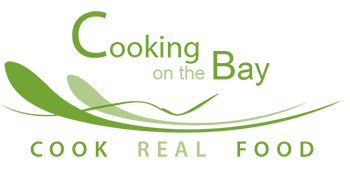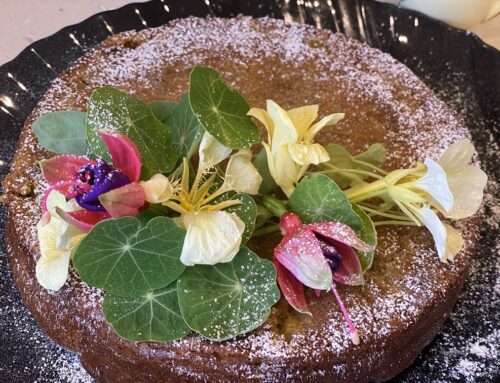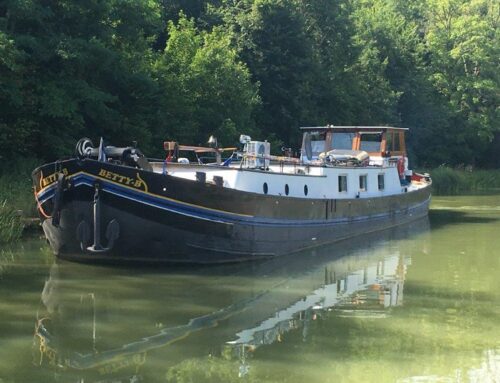There are so many reasons why I love the South Melbourne Market; I shop there two or three times week for my cooking classes. The food is fresh and good quality, the store holders are friendly and helpful; it is happy and vibrant place to visit. I knew it progressive and environmentally conscious; they introduced a ban on one-use plastic bags back in April long before the big supermarkets!
Yesterday, I learnt there are many more reasons to love this market, when I went on the Sustainability September Festival’s ‘Behind the Scenes Tour’ and I discovered what the market does to manage their waste.
It was an informative tour with the most enthusiastic, knowledgeable trend-setter, Adam Mehegan, the market Operations Manager who is the leader of the market’s waste and environmental sustainability program. A small group of us, donned our brightly coloured safety jackets, and followed Adam through the back of house at the market to discover what the market is doing to reduce their waste and to contribute the sustainability of our planet. What also surprised me, it was so neat and tidy without any bad smells at all and we were surrounded byy waste, animal, seafood, vegetable and fruit.
Adam explained his most sophisticated, innovative operation with its complex equipment and systems all engineered and built to reduce the market’s waste and deposits in landfill. Landfill causes pollution to the local environment by contaminating the groundwater and aquifers, contaminating the soil, and producing methane. Methane is a greenhouse gas that is 21 times more powerful than carbon dioxide and it is these greenhouse gasses that are said to be the leading cause of global warming.
Adam’s innovations include turning their food waste into garden fertiliser, milk bottle recycling, polystyrene recycling, water management, weekly food donations and food rescue programs. The massive recycling program reduces the impact of the market’s ‘waste’ and cost to the environment; it makes money out of what most people think of as rubbish and waste! Former ‘rubbish’ is recycled, remade into another product and sold. 50 cents from each sale of the market’s Soil Food and Market Magic is donated to a local environmental charity. Everyone is a winner!
- Compressed milk bottles
- Re-constituted polystyrene
- Everything was clean – no bad smells anywhere
- Milk bottles are recycled into piping
- The miniature worm farm
- Solar power is on the roof
All the market food waste, including fish heads and bones are dehydrated, fermented and turned into the most fragrant, rich, organic fertiliser, which they call Soil Food. It is packaged and sold at the market. The grey water collected from the process is used for cleaning at the Market and in the long-term they hope to be able to use this to water the gardens in the municipality.

Market Magic the organic fertiliser
The market fruit and vegetable waste is collected twice a week and taken to a farm on the outskirts of Melbourne and fed to millions of worms, which turns the green waste into worm castings or vermicompost. This nutrient-rich vermicompost, called Market Magic, contains minerals and a highly active biological mixture of bacteria and enzymes that are beneficial to plant growth, one which will supercharge the garden.
The market recycles its ‘waste’ water, harvests its rainwater and has installed solar panels. Adam has systems in place to gauge the power and water usage of traders in case of malfunctions in equipment; once a malfunction has been alerted it can be rectified and hence avoiding huge water and power costs, as has happened in the past. The market’s leading initiatives have others following in their wake.
And now for the oyster, scallop and mussel shells! The market is now part of the Nature Conservatory’s recycling program called ‘Shuck don’t chuck’. This is another program, now operating throughout Australia, which is making good use of a previously wasted product and our environment and the oyster growers are the beneficiaries.

The top of the shucked oysters
The market is a huge tourist attraction and is especially well known for its seafood. The restaurants, stalls and oyster bars team with people who flock there for a seafood treat. Consequently, there are tonnes of empty oyster, mussels and scallop shells which require disposal.
At the market, the shells are collected in especially marked black bins and taken by Geelong disabled people’s industries. They are transported to the Bellarine peninsular where they undergo a 6-month process of curing in the sun to kill off any disease; they are then combined with limestone rubble, and placed on the seafloor as a ‘settlement substrate’ for juvenile oysters to cement onto.
In this way they are rebuilding the shellfish reefs in Port Phillip Bay, which were destroyed by the historic dredge fishing. This dredging removed much of the original oyster shells from Port Phillip Bay; it is this lack of hard shell substrate that is one of the key factors preventing oyster reefs from re-establishing naturally in the Bay.
In order to grow, juvenile oysters require a hard surface, preferably another oyster shell or something similar like a mussel or scallop, on which to settle.
Shell recycling through Shuck don’t chuck, is providing a sustainable solution to the loss of shells in the life cycle while decreasing landfill waste. Partners in this project include Brambles, GDP Industries, Little Creatures Geelong and SUEZ.














